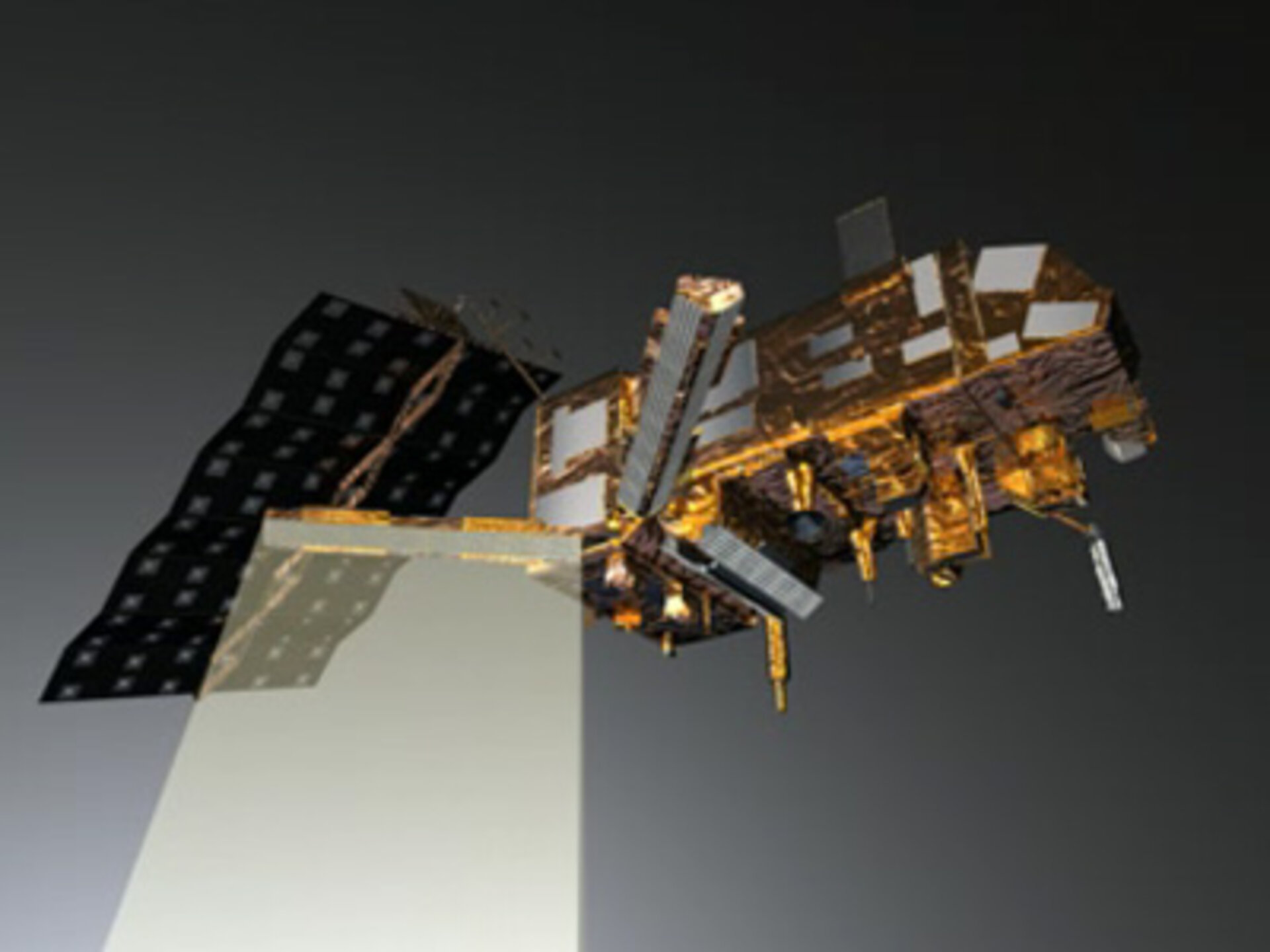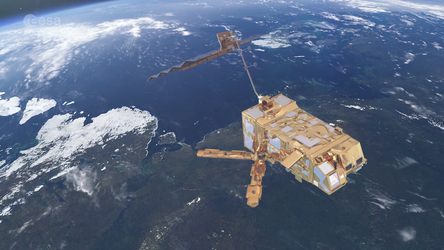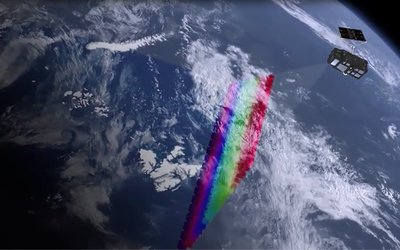

ASCAT scanning principle
Winds travelling over the oceans influence the radar backscattering properties of the surface of the sea in a way that is related to wind speed and direction. ASCAT will exploit this fact by transmitting pulses of microwave energy at 5.255 GHz (C-band) towards the surface of the Earth and then records the resulting echoes. These data will be used to derive wind speed and direction over the oceans for use in operational weather forecasting and climate research.
The Advanced Scatterometer (ASCAT) uses a solid state High Power Amplifier to generate transmit-pulses of 150W peak power. In order to limit the amount of data to be downlinked, much of the data is processed on board using a digital Data Processing unit.
ASCAT's two sets of antennae provide two 550 kilometres wide swaths. Each swath is centred at an inclination of 36° to the left and right of the satellite ground track, resulting in a gap of about 650 km between the two swaths. This so-called gap, however, is observed during later obits, achieving almost global coverage in five days.
From MetOp's polar orbit 800 kilometres above the surface of the Earth, ASCAT makes the observations for each swath sequentially. Each point on the ground is viewed three times, first by the fore-beam, then the mid-beam and finally by the aft-beam. One cycle is completed for one swath before the cycle begins for the other swath. Each beam takes 35.4 milliseconds, totalling 0.21 seconds to complete one transmit-receive cycle for all the six antennae, i.e. both swaths.





